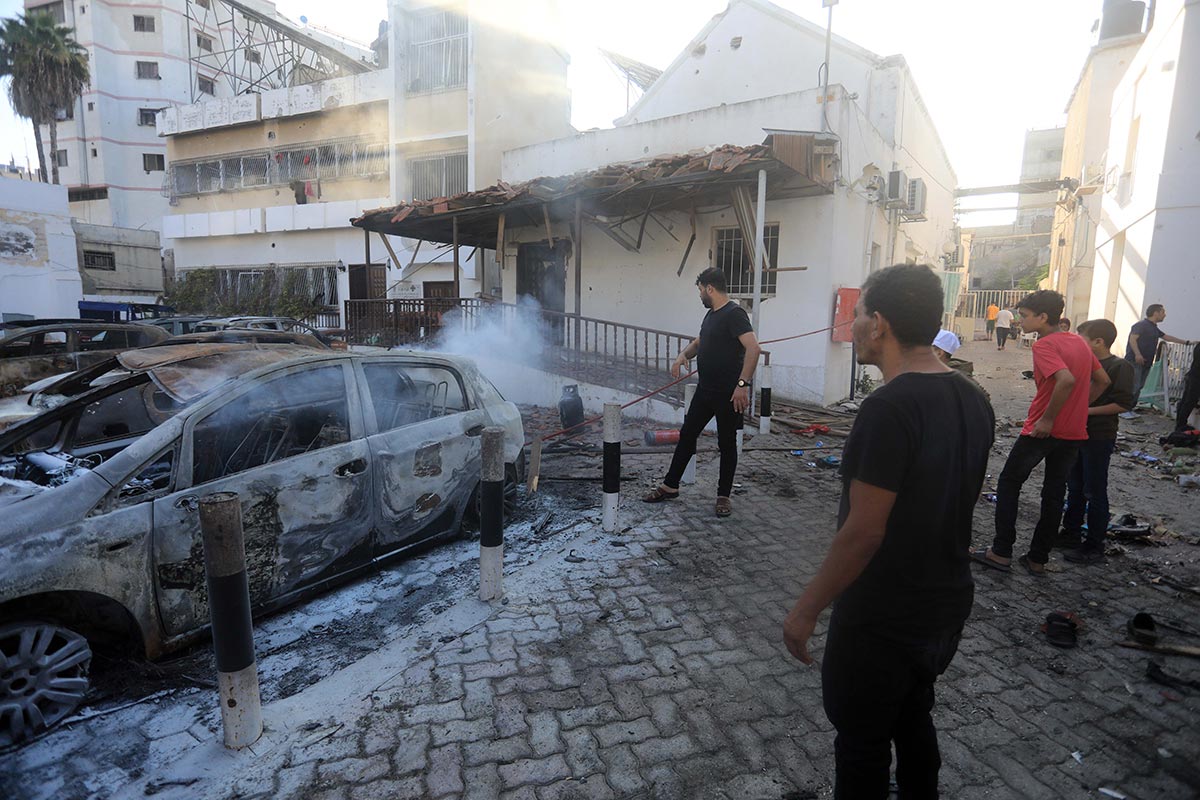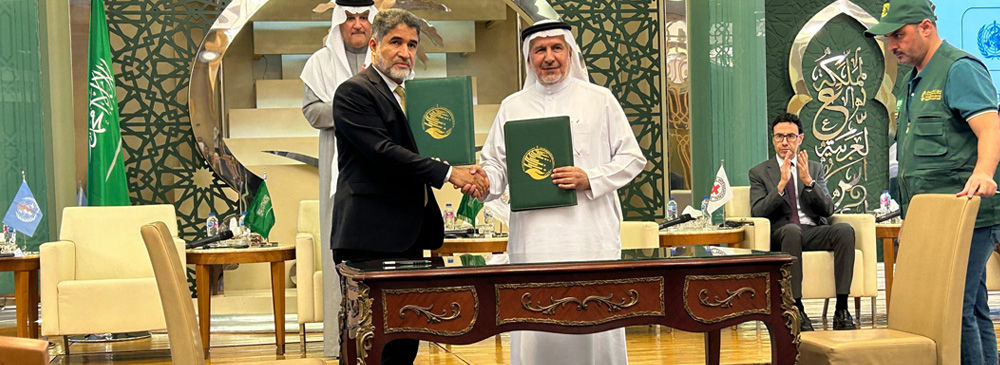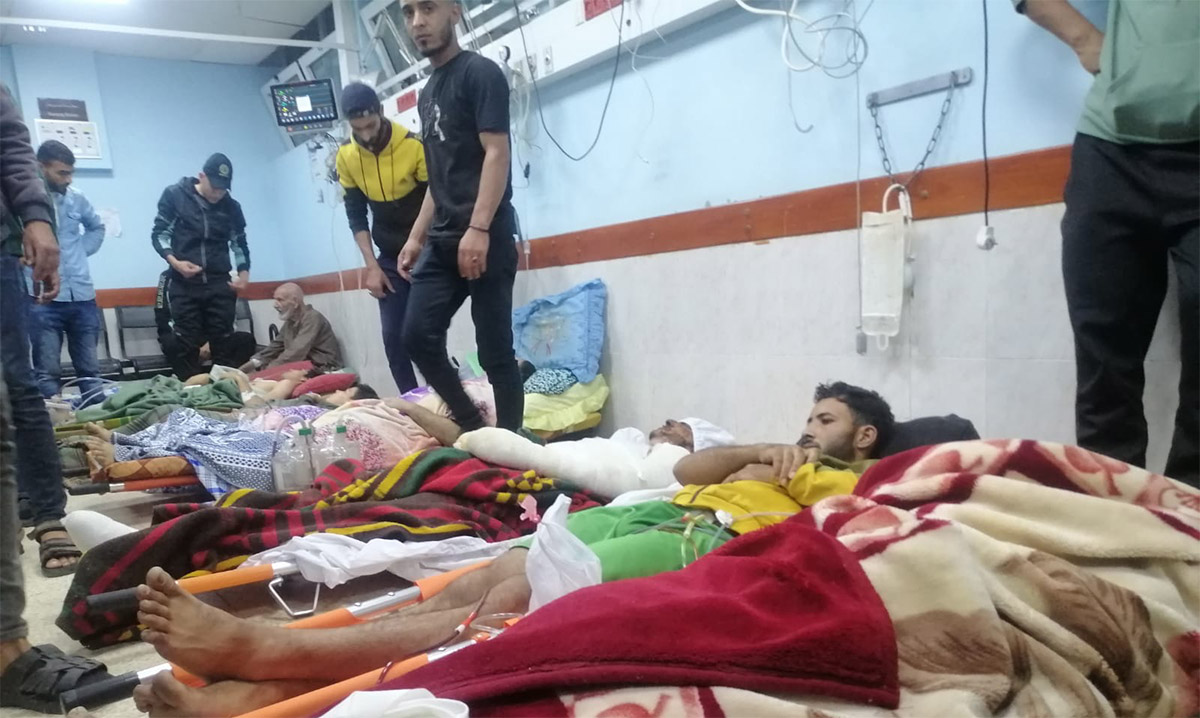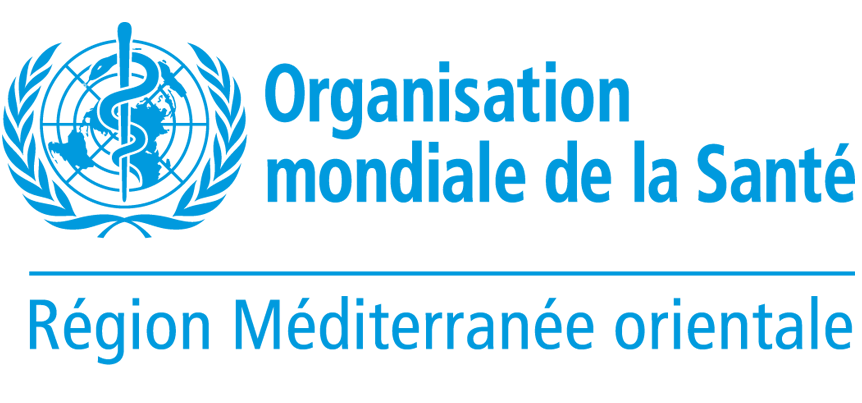WHO calls for protection of humanitarian space in Gaza following serious incidents in high-risk mission to transfer patients, deliver health supplies

12 December 2023 – Cairo, Geneva, Jerusalem, WHO reiterates its call for the protection of health care and humanitarian assistance in Gaza, following military checkpoint delays and detention of health partners during a mission to transfer critically-ill patients and deliver supplies to a hospital in northern Gaza. During the mission, a patient reportedly died.
On 9 December 2023, a WHO team, in collaboration with the Palestine Red Crescent Society (PRCS) and the United Nations Office for the Coordination of Humanitarian Affairs (OCHA), and with support from the United Nations Department of Safety and Security (UNDSS), completed a high-risk mission to Al-Ahli Hospital in Gaza City to deliver medical supplies, assess the situation in the hospital, and transfer critically-injured patients to a hospital in the south. The mission delivered trauma and surgical supplies, enough to treat 1500 patients, to the hospital, and transferred 19 critical patients with 14 companions to Nasser Medical Complex in south Gaza, where they can receive a higher level of care.
On the way north, the UN convoy was inspected at the Wadi Gaza checkpoint, and ambulance crew members had to leave the vehicles for identification. Two PRCS staff were detained for over an hour, further delaying the mission. WHO staff saw one of them being made to kneel at gunpoint and then taken out of sight, where he was reportedly harassed, beaten, stripped and searched.
As the mission entered Gaza City, the aid truck carrying the medical supplies and one of the ambulances were hit by bullets.
On the way back towards southern Gaza, with the patients from Al-Ahli Hospital on board, the convoy was again stopped at the Wadi Gaza checkpoint, where PRCS staff and most of the patients had to leave the ambulances for security checks. Critical patients remaining in the ambulances were searched by armed soldiers.
One of the same two PRCS staff temporarily detained earlier on the way in was taken for interrogation a second time. The mission made numerous attempts to coordinate his release, but eventually—after more than two and a half hours—had to make the difficult decision to leave the highly dangerous area and proceed, for the safety and wellbeing of the patients and humanitarian workers. (Three ambulances carrying extremely critical patients had already continued onwards earlier, while three remained with the convoy.) PRCS reported afterwards that during the transfer process, one of the injured patients died, as a result of his untreated wounds.
The PRCS staff member was released later that night after joint UN efforts. Yesterday, the WHO team met him, as well as his father, supervisor, and colleagues. He said he was harassed, beaten, threatened, stripped of his clothes, and blindfolded. His hands were tied behind his back and he was treated in a degrading and humiliating manner. Once released, he was left to walk towards the south with his hands still tied behind his back, and without clothes or shoes.
Detentions have happened previously during humanitarian missions in Gaza.
On 22 November, six people from the Ministry of Health and PRCS were detained during a WHO-led mission to move patients from Al-Shifa Hospital. Four people–three from the Ministry of Health and one PRCS staff—are still in detention, more than three weeks later. There is no information on their wellbeing or whereabouts. This is unacceptable. WHO, along with their family, colleagues and loved ones, is deeply concerned about their wellbeing. We reiterate our call for their legal and human rights to be respected.
Obstructing ambulances and attacks on humanitarian and health workers are unconscionable. Healthcare, including ambulances, are protected under international law. They must be respected and protected in all circumstances.
The difficulties faced by this mission illustrate the shrinking space for humanitarian actors to provide aid within Gaza, even though access is desperately needed to alleviate the catastrophic humanitarian situation, as called for in the resolution adopted by the WHO Executive Board members on 10 December.
WHO and partners remain firmly committed to staying in Gaza and assisting the population. But as hostilities increase across Gaza, and aid falls short of needs, the humanitarian support system is on the verge of falling apart.
The only viable solution is a sustained ceasefire, so WHO and partners can work safely and unhindered to strengthen a deteriorating health system, replenish critical supplies of fuel, medicines, and other essential aid, and prevent disease, hunger, and further suffering in the Gaza Strip.
Note to editors on Al-Ahli Hospital
During the above mission to the heavily destroyed Gaza City, WHO staff saw hundreds of people, including women, elderly people, youth, and children, who seemed surprised to see aid workers in the area given the highly volatile situation and insecurity.
WHO staff described Al-Ahli Hospital as in a state of “utter chaos and a humanitarian disaster zone.” It is extremely congested with many displaced people and over 200 patients, while it only has enough resources to support 40 beds – half of its original bed capacity. The building has sustained substantial damage because of the hostilities.
Doctors said the situation is “beyond control” as they face shortages of fuel, oxygen, and essential medical supplies, as well as a lack of food and water for patients and themselves. Health staff capacity is minimal, nursing care is extremely limited, and the hospital is relying heavily on volunteers.
Faced with vast numbers of trauma patients inside the hospital, and outside on the street, doctors are forced to prioritize who receives care and who does not. They are treating many serious cases in the hospital’s corridors, on the floor, in the hospital chapel, and even in the street. The hospital is severely short-staffed, and it is lacking the ability to perform vascular operations. Limb amputations are decided as the last resort to save lives.
WHO appeals for protection of the health system from further attacks and degradation of its capacity
4 December 2023, Cairo/Geneva – Once again, nowhere is safe in Gaza. WHO is gravely concerned about the resumption of hostilities, including heavy bombardment in Gaza, and reiterates its appeal to Israel to take every possible measure to protect civilians and civilian infrastructure, including hospitals, as per the laws of war.
We have seen what happened in northern Gaza. This cannot be the blueprint for the south. Gaza cannot afford to lose another hospital as health needs continue to soar.
As more civilians in southern Gaza receive immediate evacuation orders and are forced to move, more people are being concentrated into smaller areas, while the remaining hospitals in those areas run without sufficient fuel, medicines, food, water, or protection of health workers.
WHO and other partners are less able to provide support, given dwindling access to our supplies or any assurance of safety when we move supplies or staff.
This morning WHO was contacted with advice to move as many medical supplies as possible from a warehouse in Gaza, situated in an area ordered to be evacuated. Access to storage could become challenging over the coming days due to ground operations.
Intensifying military ground operations in southern Gaza, particularly in Khan Younis, are likely to cut thousands off from health care - especially from accessing Nasser Medical Complex and European Gaza Hospital, the two main hospitals in southern Gaza - as the number of wounded and sick increases.
Lack of access would also limit WHO’s ability to deliver aid to these hospitals.
About 1.9 million people, nearly 80% of Gaza's population, are estimated to be internally displaced. Recent evacuation orders cover 20% of Khan Younis and localities east of Khan Younis, which prior to the hostilities were home to nearly 117,000 and 352,000 people, respectively.
In less than 60 days, the number of functioning hospitals has dropped from 36 to 18. Of these, three are only providing basic first aid, while the remaining hospitals are delivering only partial services. Those able to admit patients are delivering services well over their intended capacities, with some treating twice to three times as many patients as they were designed for. The 12 hospitals that are still operational in the south are now the backbone of the health system.
On a recent visit to Nasser Medical Complex in Khan Younis, WHO team described the situation inside as catastrophic, with the building and hospital grounds grossly overcrowded with patients and displaced people seeking shelter. The emergency ward is overflowing with patients. There is a shortage of health workers compared to the overwhelming needs. Those who are available have been working non-stop and are exhausted. Many patients are being treated on the floor. Bed capacity has been overwhelmed. Patients and families sheltering at the hospital are scared for their security.
Disease surveillance systems are hampered, but syndromic surveillance has noted increases in infectious diseases, including acute respiratory infections, scabies, jaundice, diarrhea, and bloody diarrhea. Shelters in the south are also reporting cases of acute jaundice syndrome, a worrisome signal of hepatitis.
From 7 October to 28 November , WHO has recorded an unprecedented number of attacks on health care: 203 attacks on hospitals, ambulances, medical supplies, and the detention of health care workers. This is unacceptable. There are means to protect civilians and civilian infrastructure, and they should be instituted.
The only viable solution is a sustained ceasefire.
Note to editors:
On 3 December alone, 349 people have been killed and 750 injured according to reports from the Ministry of Health.
According to the Ministry of Health, the bed occupancy rate at operational hospitals stands at 171%, while in the intensive care units the occupancy rate is up to 221%.
Currently, there are 1000 patients and thousands of people sheltering at the 350-bed Nasser Medical Complex, and 1000 patients and an estimated 70,000 people sheltering at 370-bed European Gaza Hospital. Both hospitals are three times beyond their capacity.
As of 3 December, per Ministry of Health reports, more than 15,899 people have died, over two-thirds of them women and children. An additional 42,003 people, also mostly women and children, have been injured.
WHO and King Salman Humanitarian Aid and Relief Centre (KSrelief) sign a Letter of Intent to scale up health response assistance in Gaza Strip

23 November 2023, Cairo, Egypt – The World Health Organization (WHO) and the King Salman Humanitarian Aid and Relief Centre (KSrelief) today signed a letter of intent to solidify their commitment to collaborative humanitarian efforts in the Gaza Strip.
The letter of intent, for US$ 10 million, was signed by Dr Ahmed Al-Mandhari, WHO Regional Director for the Eastern Mediterranean, and His Excellency Dr Abdullah Al Rabeeah, Supervisor General of KSrelief. The document reflects the continued shared vision and dedication of both organizations to address urgent health needs of people in the Region.
The support funded by KSrelief will be aligned with WHO’s operational plan for the occupied Palestinian territory, with a focus on ensuring the availability of life-saving medical supplies and equipment in the Gaza Strip, as well as fuel availability.
As deaths and injuries in the Gaza Strip continue to rise, this support will allow WHO to procure additional life-saving trauma supplies for delivery to health facilities in the Gaza Strip as soon as access is possible. Intense overcrowding and disrupted health, water and sanitation systems are contributing to the rapid spread of infectious diseases, which also demand an urgent scaled-up response. Fuel is also urgently needed, to power the delivery of essential service at health facilities as well as ambulance services. This response, however, is dependent on the unimpeded delivery of safe water, food, fuel and other humanitarian aid to health facilities, so that they can function and provide the life-saving health services that are desperately needed.
KSrelief is a long-standing partner of WHO, working to preserve health systems and facilitating the provision of life-saving services and supplies in emergency-affected countries and territories across the Region and beyond. Since 2016, WHO and KSrelief have collaborated on multiple health projects in emergency settings at a total cost of more than US$ 300 million.
Joint UN mission transfers critical patients from Al-Shifa Hospital in Gaza, under intense fighting

24 November 2023, Geneva/Cairo - On 22 November, in cooperation with the Palestine Red Crescent Society, WHO participated in another joint-UN mission to transfer 151 patients, relatives and health workers accompanying them from Al-Shifa hospital in northern Gaza. The mission was undertaken following specific requests from health authorities and hospital officials in Gaza.
This was the third mission to Al-Shifa carried out by WHO, other UN agencies and partners in less than a week; the first was an assessment mission (18 November) and the second was an evacuation mission to transport 31 infants (19 November).
During this mission, the team transferred 73 severely ill or injured patients, including 18 dialysis patients; 26 patients with serious spinal injuries; 8 patients with severe chronic conditions; two in need of critical care; and 19 patients in wheelchairs. The patients were transported in 14 ambulances supplied and staffed by the Palestine Red Crescent Society, and two buses, with 8 health workers and 70 family members accompanying them.
This was a high-risk mission, as intense fighting and shelling continued in proximity of Al-Shifa hospital.
It took 20 hours for the team to complete the evacuation, including 6 hours at a checkpoint where the team and patients were screened by the Israeli Defense Force. This was despite an initial agreement to only screen participants at the origination point in Al-Shifa Hospital.
The screening process involved checks on the patients, their relatives, and the personnel; these included elderly, children and severely ill patients. Three medical personnel from the Palestine Red Crescent Society and three from the Ministry of Health were detained.
After 6 hours at the security checkpoint, the convoy proceeded as the condition of some of patients was already deteriorating. Patients reached their final destination late at night.
Most of the patients were ultimately transferred to the European Gaza Hospital, with the dialysis patients admitted to Al Najjar Hospital. Both facilities are in the south of Gaza.
WHO is extremely concerned about the safety of the estimated 100 patients and health workers remaining at Al-Shifa. Due to the limited time that the mission members were able to spend in the hospital and the urgency of moving the most critical, it was difficult to determine exactly how many remain.
Two of the six detained health workers have reportedly been released. We do not have information about the well-being of the four remaining health staff, including the director of Al-Shifa hospital. WHO calls for their legal and human rights to be fully observed during their detention.
This and other evacuations were requested by health authorities, health workers and patients, and became necessary as Al-Shifa Hospital is no longer able to function due to lack of water, fuel, medical supplies, food, and staff, and recent military incursions.
Also on 21 November, WHO and partners undertook a mission to Al-Ahli Hospital in northern Gaza to assess medical priorities. Al-Ahli, which is one of the only functional hospitals in the north, must be urgently and regularly supplied with fuel, water, food and medical supplies to ensure the continuity of care. Today, 22 patients along with 19 companions arrived at the European Gaza hospital, in the transfer mission undertaken with the Palestine Red Crescent Society, following the assessement mission.
WHO again asks all relevant authorities to ensure that the medical evacuations that WHO has been requested to assist in can proceed safely, under agreed procedures, without endangering the lives of patients. Ultimately, the safety, security and evacuation decisions rest with the relevant authorities.








